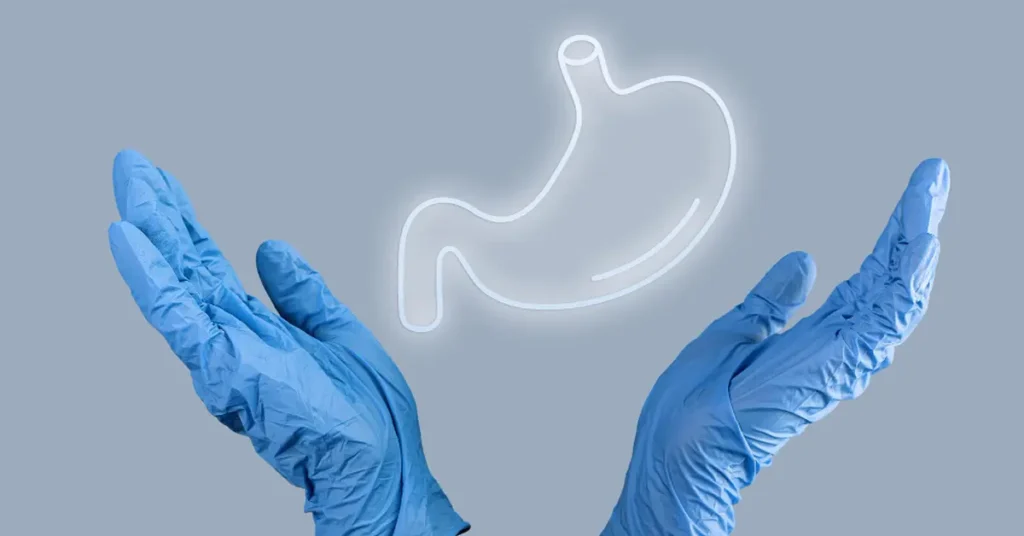Digestive discomfort after consuming dairy is a common concern for many people, but understanding whether you’re dealing with lactose intolerance or a dairy allergy is essential for choosing the right treatment and lifestyle adjustments.
At GI Solutions of Illinois, we see patients every week who experience bloating, cramping, or skin reactions after eating dairy, but the underlying cause isn’t always the same.
Understanding Lactose Intolerance
Lactose intolerance is a digestive condition that occurs when the body doesn’t produce enough lactase, the enzyme needed to break down lactose, a sugar found in milk and dairy products. When lactose isn’t properly digested, it ferments in the colon and leads to bloating, gas, abdominal pain, and diarrhea, usually within two hours of dairy consumption.
Unlike a true food allergy, lactose intolerance doesn’t involve the immune system. It’s uncomfortable, but not dangerous or life-threatening. Studies show that lactose intolerance affects nearly 36% of Americans, with higher rates among Hispanic, Asian, and African American populations. (Source: NIH)
What Is a Milk Allergy?
A milk allergy, by contrast, is an immune system reaction to the proteins in milk, such as casein or whey. The immune system mistakenly identifies these proteins as threats and responds with histamines and other chemicals that trigger allergic symptoms. Reactions can include hives, swelling, difficulty breathing, vomiting, or even anaphylaxis, which is a life-threatening emergency requiring immediate medical attention.
While lactose intolerance is more common in adults, milk allergies are more prevalent in infants and children, though some carry it into adulthood. Unlike intolerance, dairy allergy symptoms can go beyond digestion, affecting the skin, respiratory system, and overall immune response.
| Symptom Type | Lactose Intolerance | Dairy Allergy |
| Cause | Lack of lactase enzyme | Immune reaction to protein |
| Main Symptoms | Bloating, gas, diarrhea, cramps, nausea (digestive only) | Hives, swelling, rash, trouble breathing, vomiting, diarrhea, possibly anaphylaxis |
| Onset | 30 min–2 hr after eating dairy | Minutes to hours after dairy |
| Severity | Uncomfortable, not dangerous | Can be life-threatening (anaphylaxis) |
| Other symptoms | Rarely, fatigue or headache | Runny nose, watery eyes, coughing, drop in blood pressure |
Diagnosis: Why It Matters
Getting the correct diagnosis is crucial. At GI Solutions of Illinois, our team uses non-invasive diagnostic tools to determine the root cause of your symptoms. If lactose intolerance is suspected, we may recommend a hydrogen breath test or a lactose elimination challenge. For milk allergy, we refer patients to an allergist for skin prick testing, IgE blood testing, or an oral food challenge under medical supervision.
Accurate diagnosis helps avoid unnecessary dietary restrictions or dangerous oversights. Misdiagnosing a milk allergy as lactose intolerance or vice versa can lead to nutritional deficiencies or severe allergic reactions.
Treatment Strategies: Tailored to Your Condition
For those with lactose intolerance, the focus is on managing symptoms. Many people can still enjoy limited amounts of dairy, especially products like hard cheeses and yogurts that contain less lactose. Over-the-counter lactase enzyme supplements can also help. Our gastroenterologists provide personalized diet planning to ensure you maintain healthy calcium and vitamin D levels without discomfort.
In contrast, individuals with a dairy allergy must follow a strict elimination diet. This means avoiding all dairy-derived ingredients, including hidden sources of whey and casein, which are commonly found in packaged foods. For patients at risk of severe reactions, we advise keeping epinephrine auto-injectors readily available and provide nutritional counseling to ensure safe, balanced alternatives.
When to See a Specialist
If you’re unsure whether your symptoms point to lactose intolerance or a dairy allergy, don’t self-diagnose. Both conditions require a professional evaluation.
At GI Solutions of Illinois, we offer comprehensive gastrointestinal assessments, including dietary consultations, lab testing, and personalized care plans.
Unexplained bloating, cramps, or rashes after dairy consumption shouldn’t be ignored. Identifying the true cause of your discomfort can help you reclaim comfort, confidence, and control over your diet.
Final Thoughts
Living with digestive issues doesn’t mean living with uncertainty. Whether you’re managing lactose intolerance or navigating a dairy allergy, our team at GI Solutions of Illinois is committed to delivering expert care and clarity.
Reach out today to schedule a consultation and take the first step toward better digestive health.
Take the first step toward lasting relief with GI Solutions.
Call us today at (773) 631-2728
We’re here to support you, every step of the way.


